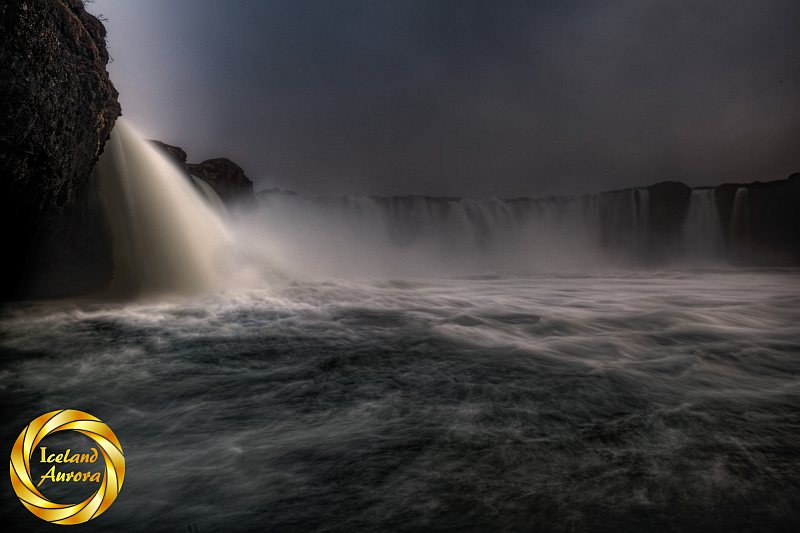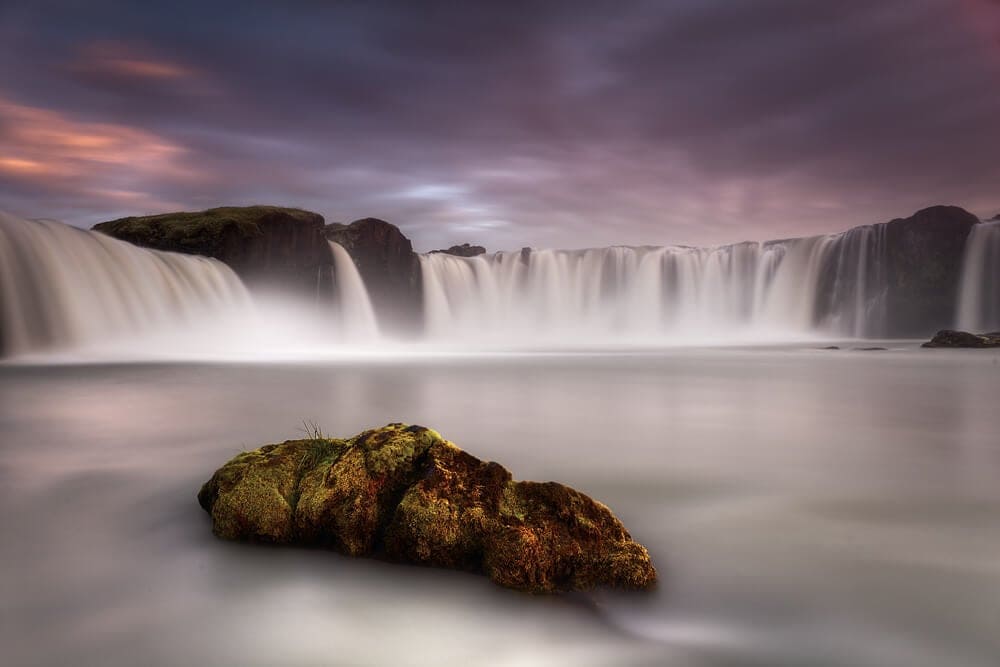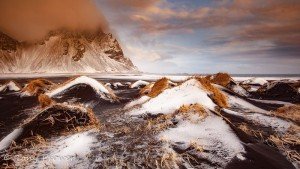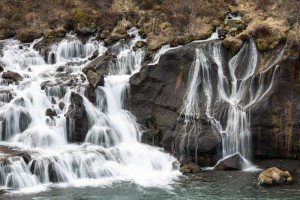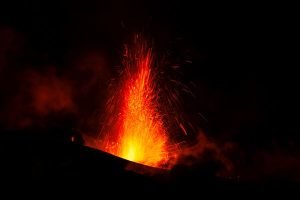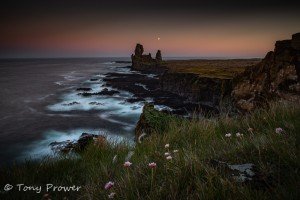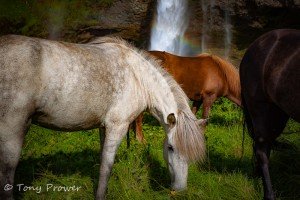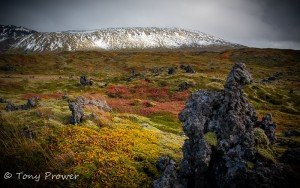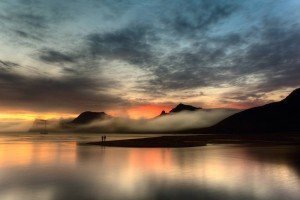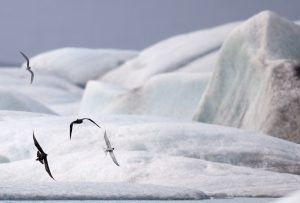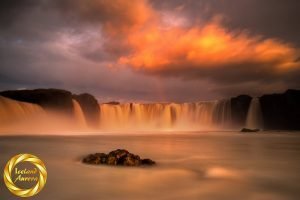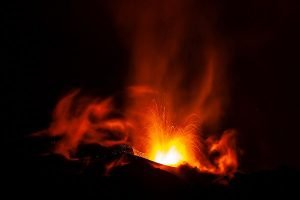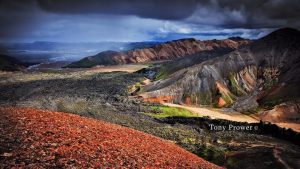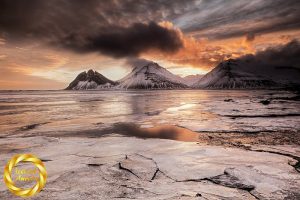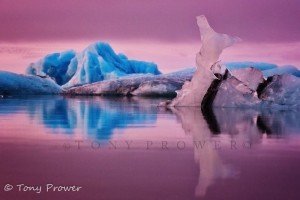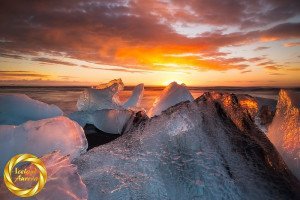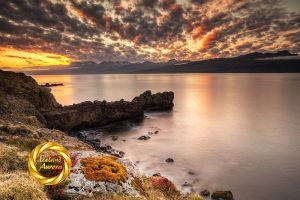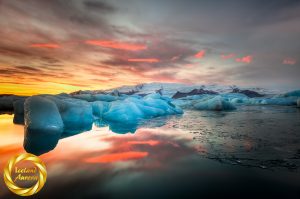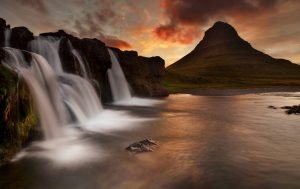Goðafoss Waterfall
Goðafoss Waterfall is my favourite waterfall to photograph in all of Iceland. This amazing Northern waterfall is easily in my top five of all Icelandic locations.
The stunning Goðafoss Waterfall is one of the most beautiful natural wonders of Iceland. Located in the northeast part of the country, this breathtaking waterfall is a must-see destination for any nature enthusiast or tourist. It has been featured in many travel guides and is a popular attraction among locals and travelers alike.
Waterfall of the Gods
The Goðafoss Waterfall, which literally translates to “waterfall of the gods”, derives its name from Old Norse mythology. According to the legend, it was here that the Norse chieftain, Thorgeir Ljosvetningagodi spent two days meditating. This meditation led him to decide that Iceland should practice Christianity as its main religion.
Þorgeirr himself was a pagan priest and declared that paganism could still be practiced in private. In an act of commitment to the new religion, he threw all his pagan idols into the Goafoss waterfall, and hence it became known as the Goafoss ‘Waterfall of the gods’.
Tours to Geysir and Gullfoss!
How do I get to Goðafoss Waterfall?
Goðafoss is located in the North Central region of Iceland, about 40 minutes drive from Akureyri and about 40 minutes from Mývatn. It is about an 80-minute drive from the eastern side of Dettifoss waterfall. The famous waterfall is very close to the ring road, so no diversion is necessary. This makes Goðafoss Waterfall easily accessible all year round.
My first encounter with Godafoss was on my first road trip around Iceland. I was driving around Iceland anti-clockwise. After successfully cooking my evening meal on the hot springs at Namaskard, I camped at Myvatn Lake. I didn’t find much at Lake Myvatn, so I continued along the ring road. The waterfall was a surprising sight as I came down a hill. The horseshoe cascade sat beautifully in the landscape, and I felt like a real explorer.
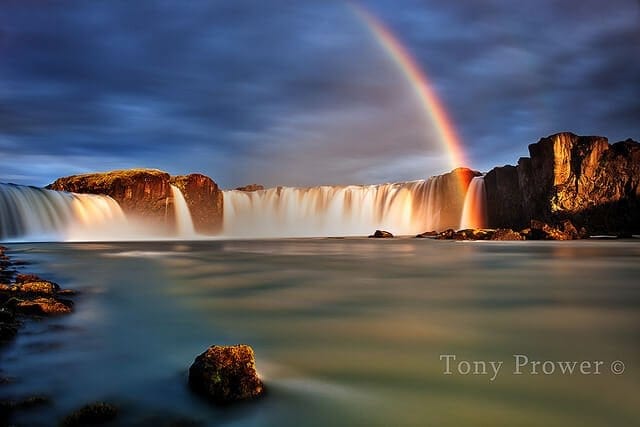
Goðafoss waterfall is a large horseshoe complex, and the total stretch of cascading water is around 30 meters. The legendary saga character ‘Grettir the Strong’ is said to have dove down into the falls and was able to swim to the caves behind the water. Grettir was also famous for swimming across the Norwegian fjords, so this remarkable feat of diving behind Godafoss seems unbelievable to most people, but not to Grettir the Strong.
Photo Tips
The main tourist spot is a car park on the western bank, but if you cross the bridge, you can access the eastern side, where it is possible to get down to the lower river bank. The eastern side offers more photographic opportunities. It is worth exploring both sides thoroughly. Super-wide angles work best on the western side. 24-50 mm works best on the eastern side. I would suggest observing the wind direction and picking a side with less spray.
Try experimenting with slow shutter speeds ranging from 1/4 second to 1/125 second in the daytime. In the evening or at night, use longer exposures for better colour saturation. Long exposures will give you the Milky Water Effect, so having a neutral density filter (N.D.) is generally a good idea. A circular polarizer can also help to give you better saturation of colours and longer exposure.
The falls are facing north, so getting the Northern Lights behind the falls is actually quite rare because they don’t often light up the southern sky.
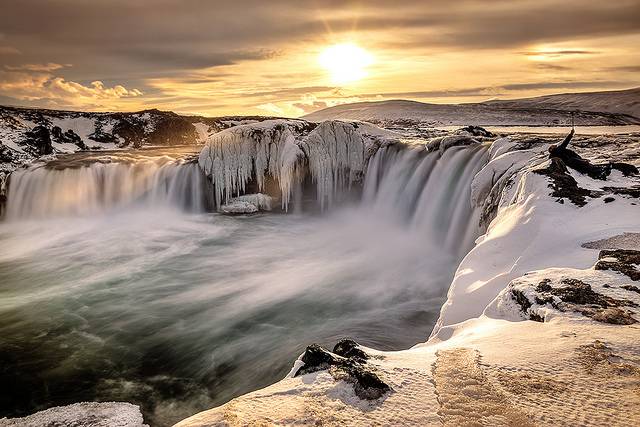
Seasons at Goðafoss Waterfall
The best time to visit Goðafoss is mid-summer at sunrise, – the rising sun shines straight through the canyon onto the waterfall. Or almost any winter day, if you can get there. The problem with planning a winter trip to Godafoss waterfall is the possibility of getting stranded in the north. They are very quick to close the main road south if there is heavy snowfall.
I heard of a photo workshop that got stuck at a Myvatn Hotel for almost a week, and even the hotel ran out of food. The photo above was taken on a winter tour in February. This was an expensive trip because I had a minor fender bender on a very slippery mountain road. And the main road was closed for one night. We were lucky.
Where to Stay
In the Summer, it is worth trying to book a room at Fosshóll Guesthouse. This bright yellow guesthouse is actually on the site, and you can see Goðafoss waterfall from the building. There is a grassy area with basic facilities for camping. Camping doesn’t normally have to be pre-booked. The guesthouse is seasonal and only opens in the summer.
In the winter, I would recommend the guesthouse at Storu Laugar. The guesthouse is on a farm estate and has a hot tub in the garden. It is also close to a heated swimming pool, and there is a pizza grill and a small shop in the village.
Sponsored
Goðafoss Hotels
These hotels are so close to Goðafoss waterfall that you won’t miss the summer sunrise. If you want a high standard of accommodation, I would recommend the following because they are really close to the waterfall:
- Fljótsbakki Hotel – 8 min drive from the falls.
- Hvammur Cottages – 11 min drive to the falls.
Goðafoss Campsite
The campsite at Goðafoss is part of the Fosshol Guesthouse. There is a moderately sized area of grass surrounded by the hotel and rental houses. The campsite is inexpensive and has a sink for washing, toilets, and a shower.
Local Tours and Tourist Information Around Godafoss Waterfall
Godafoss Waterfall is one of the most breathtaking natural wonders in the world. Located just a few miles from Akureyri in northern Iceland, Godafoss is widely known for its beautiful cascading waterfalls, which stretch nearly 30 feet wide and provide a unique and awe-inspiring view. To experience this mesmerizing sight in its full glory, there are a range of local tours and tourist information about Godafoss waterfall that can make your trip to this stunning location even more enjoyable.
North Iceland Tours
The day tour route around Godafoss, Myvatn and Dettifoss is known as the Diamond Circle. These tours offer an in-depth look at this majestic waterfall, as well as providing insights into the surrounding area and its history. The tour guides are usually locals who have an intimate understanding of the land as they were born and raised nearby. During the tour, you can expect to learn about the different types of birds and animals that inhabit the area, as well as the cultural and geological features of the land.
Diamond Circle Tours
These day tours include Godafoss waterfall, Lake Myvatn, and Dettifoss waterfall. They depart from Akureyri.
Private Diamond Circle
Explore the Northern Waterfalls at your own pace.
Multi-day Tours
These longer tours go all around Iceland and include Godafoss Waterfall.
Get more tour ideas from this page… NORTHERN GIANTS
Hiking Trails around Goðafoss
For those who are looking for more independent exploration, there are numerous hiking trails around the Godafoss Waterfall. You can choose from a range of trails that vary in length and difficulty, allowing you to customize your experience and see the waterfall from different angles. As you hike through the region, you may come across some of the local wildlife and have the chance to take in the majestic landscape.
Kayaking
If you are visiting during the summer months, you may also want to consider joining a kayaking tour in the nearby lake of Lögurinn. Here, you can take in the beauty of the lake while paddling through its crystal-clear waters. In addition, you can even observe the local wildlife that inhabits this lake, such as ducks, swans, and other bird species.
Which side of Goðafoss Waterfall is the best?
Both sides of the 30-meter cascade have viewing platforms. These offer easy access and keep everyone orderly at a safe distance, which is great for your travel photos.
The west side is easier to access. The car park takes you to within about 100 m of the waterfall. You can see the full horse-shoe shape of Goðafoss Waterfall from the west side. In terms of sightseeing and accessibility, this is the best side.
The East side requires a bit of a hike from the car park. Just like the west side, it is possible to see the full horse-shoe shape of Goðafoss Waterfall. It is also possible to go down to the river on the East side and this is not possible on the West side. For this reason the East side of Goðafoss Waterfall is better for the photographer.
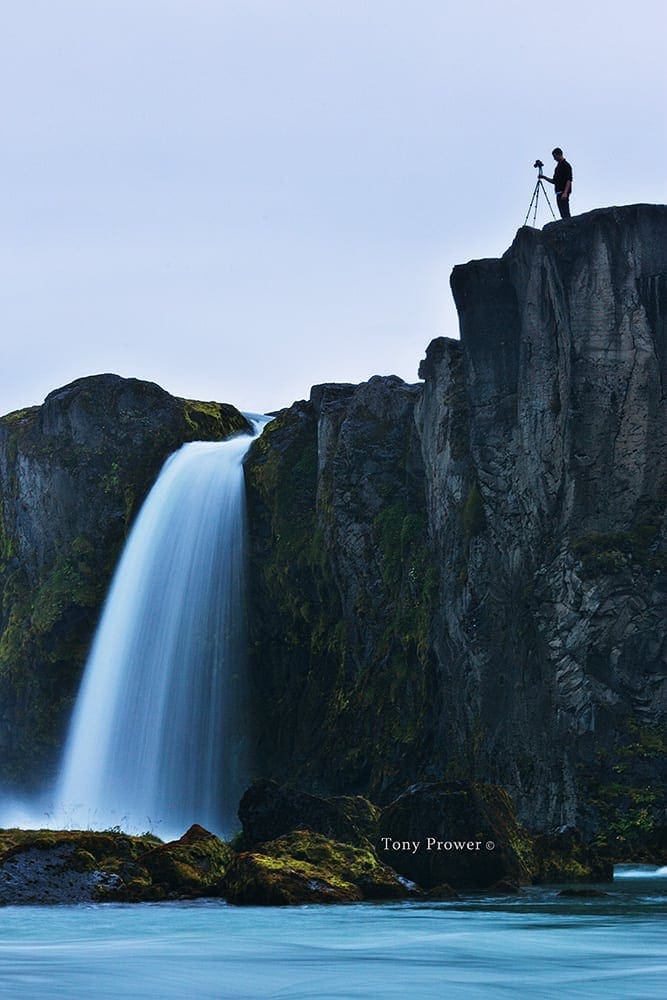
Lava Rockery
On the Eastern side, I like to explore every nook and cranny to get close to Goðafoss Waterfall. This photo is taken from the top of the waterfall in a tight space among the lava rocks. You can see the river before it disappears over the edge. The rest of the waterfall is visible in the background. These rugged lava rocks in front of me are worth including for their texture and details. Sometimes there are plants growing in the rocks. This spot is good for summer evenings because the right part of the sky can light up and become very colourful.
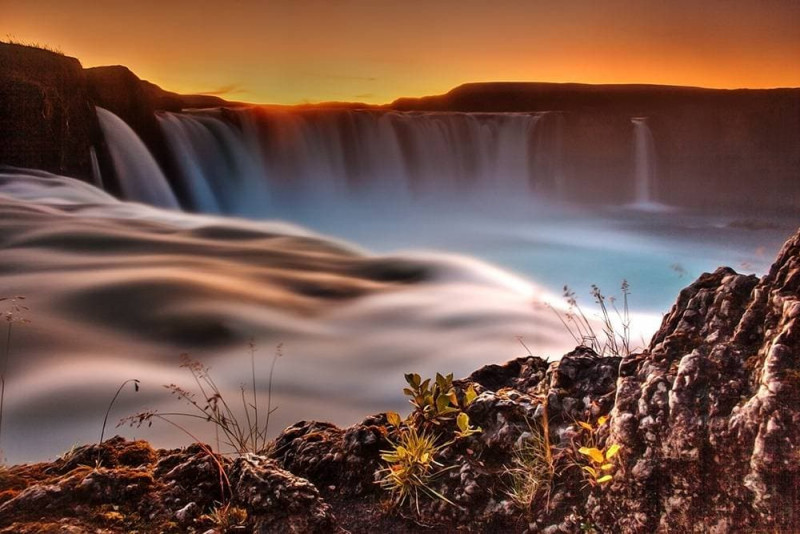
River Bank
Most of my best photos of Goðafoss Waterfall were taken from the river bank. The river is accessible via a steep rocky path. Getting down to the river bank takes good balance and general fitness. This volcanic landscape is full of rocks and boulders, so it can be slow going. The picture below was as far along the river bank as you can go. I had to fight the intense spray of the waterfall here.
